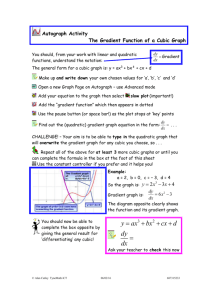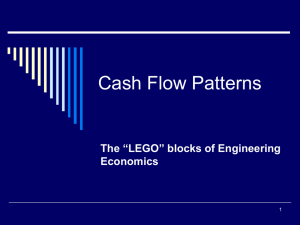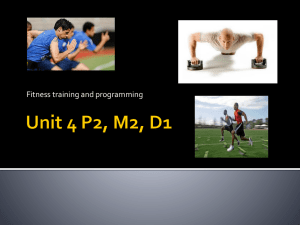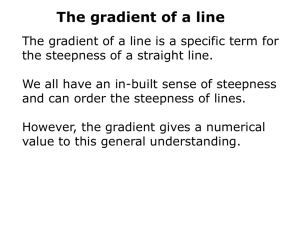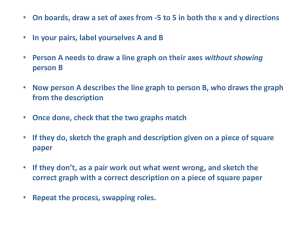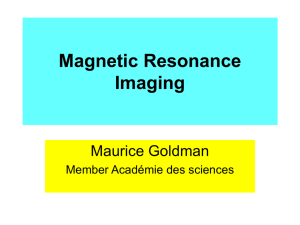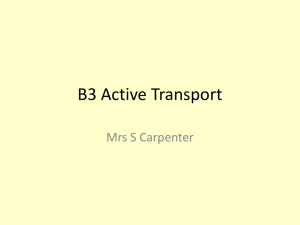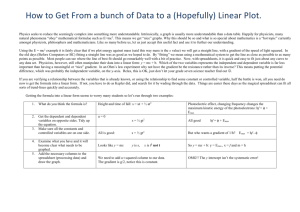firstprinc - Compass Learning Technologies
advertisement
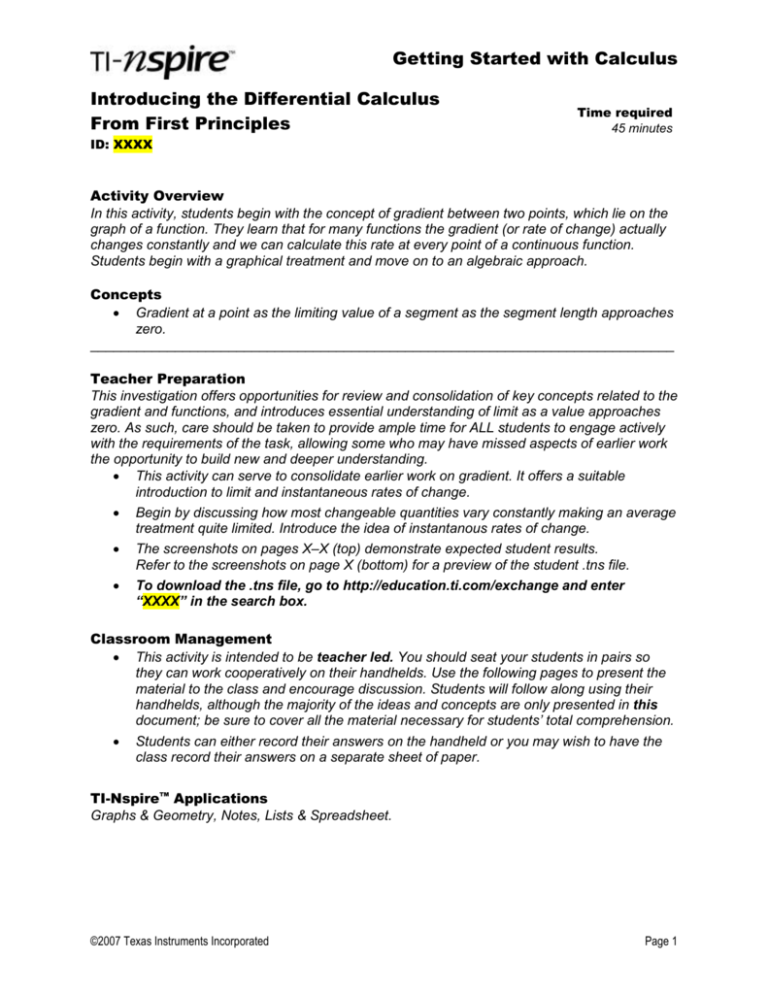
Getting Started with Calculus Introducing the Differential Calculus From First Principles Time required 45 minutes ID: XXXX Activity Overview In this activity, students begin with the concept of gradient between two points, which lie on the graph of a function. They learn that for many functions the gradient (or rate of change) actually changes constantly and we can calculate this rate at every point of a continuous function. Students begin with a graphical treatment and move on to an algebraic approach. Concepts Gradient at a point as the limiting value of a segment as the segment length approaches zero. ____________________________________________________________________________ Teacher Preparation This investigation offers opportunities for review and consolidation of key concepts related to the gradient and functions, and introduces essential understanding of limit as a value approaches zero. As such, care should be taken to provide ample time for ALL students to engage actively with the requirements of the task, allowing some who may have missed aspects of earlier work the opportunity to build new and deeper understanding. This activity can serve to consolidate earlier work on gradient. It offers a suitable introduction to limit and instantaneous rates of change. Begin by discussing how most changeable quantities vary constantly making an average treatment quite limited. Introduce the idea of instantanous rates of change. The screenshots on pages X–X (top) demonstrate expected student results. Refer to the screenshots on page X (bottom) for a preview of the student .tns file. To download the .tns file, go to http://education.ti.com/exchange and enter “XXXX” in the search box. Classroom Management This activity is intended to be teacher led. You should seat your students in pairs so they can work cooperatively on their handhelds. Use the following pages to present the material to the class and encourage discussion. Students will follow along using their handhelds, although the majority of the ideas and concepts are only presented in this document; be sure to cover all the material necessary for students’ total comprehension. Students can either record their answers on the handheld or you may wish to have the class record their answers on a separate sheet of paper. TI-Nspire™ Applications Graphs & Geometry, Notes, Lists & Spreadsheet. ©2007 Texas Instruments Incorporated Page 1 Getting Started with Calculus Step 1: Begin with discussion concerning common experiences of average rate of change compared with instantaneous rate of change, such as the time taken for a car journey. If necessary, review the ideas and skills associated with finding gradient between two points. Step 2: Carefully move students from the general gradient form to the gradient between the two points Q(x1_h, f(x1+h)) and R(x1-h, f(x1h)). The dynamic graph affords the opportunity for investigating the constant gradient associated with linear functions to the changing gradient of non-linear functions. The impact of the size of h should be carefully considered. Step 3: It may be helpful for students to return to the graph on page 1.8 and view the graph of the gradient function (already defined as f2(x) – show the graph entry line if hidden (CTRL-G) and press ENTER after f2(x). Observe the changes in the graph of the gradient function as h changes. ©2007 Texas Instruments Incorporated Page 2 Getting Started with Calculus Step 4: (CAS Extensions)The dynamic algebra facility available within Lists & Spreadsheet application is well-suited to this type of algebraic process. Students enter a function of their choice and follow the step-by-step process leading to the gradient function evaluated in cell B5. They may use this template to set out their own solutions for other functions, at first using this tool as a scaffold, and then doing their own work and checking their solutions against the spreadsheet. Step 5: Once again, the graphical representation should be studied as a support for students to begin to generalize what they have learned. Step 6 (EXTENSION): Further scaffolding is provided in the form of a program, FirstPrinciples(function), which carefully lays out the solutions sequence for any function entered. Students may use this to verify their own solutions. Finally, a challenge may be set: are there functions for which such methods do NOT work? While students may not be able to find actual functions which are not differentiable, they should come to appreciate that there exist many functions which are not differentiable for all points in their domain. ©2007 Texas Instruments Incorporated Page 3 Getting Started with Calculus Introducing the Differential Calculus from First Principles – ID: XXXX (Student)TI-Nspire File: CalcActXX_First_Principles_EN.tns ©2007 Texas Instruments Incorporated Page 4 Getting Started with Calculus ©2007 Texas Instruments Incorporated Page 5


